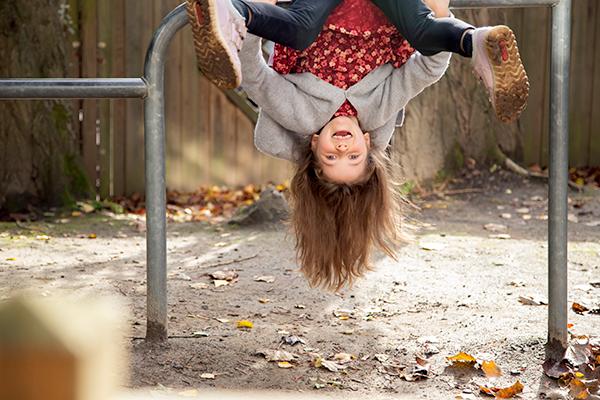

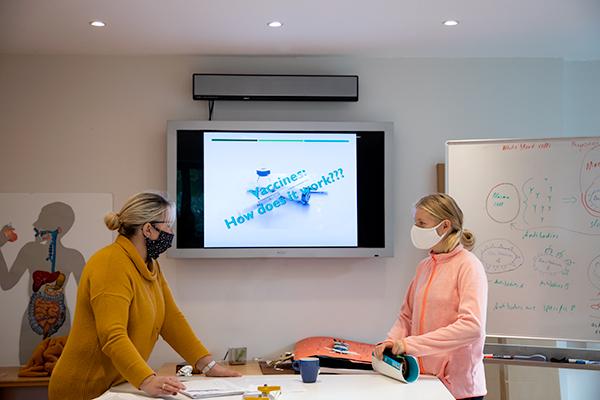
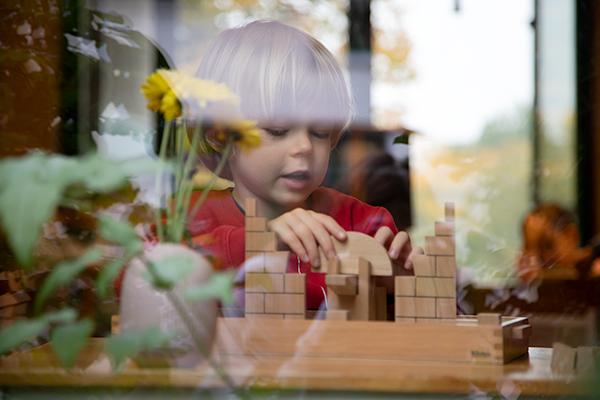
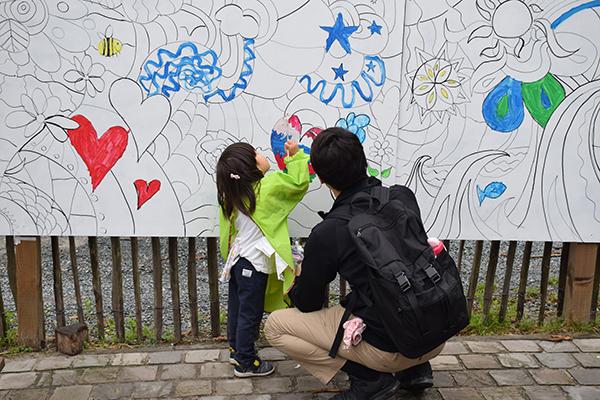
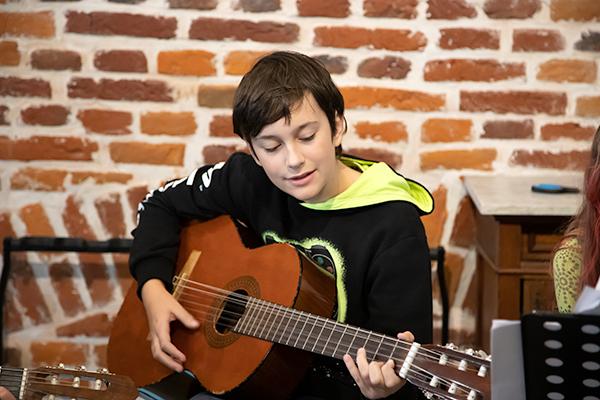
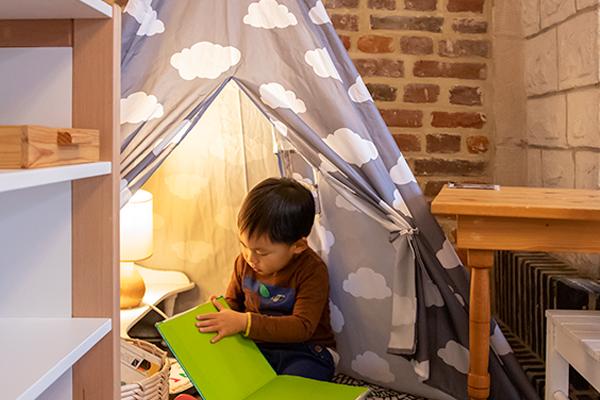
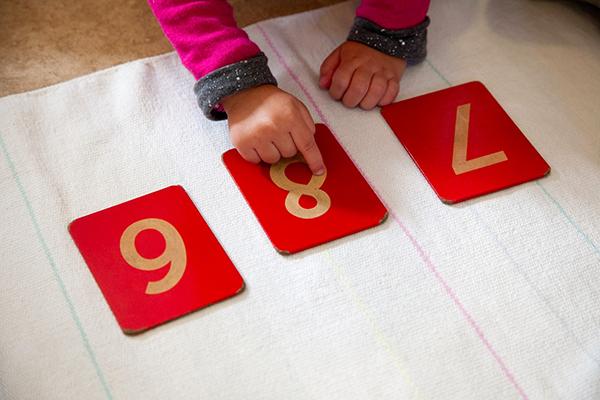
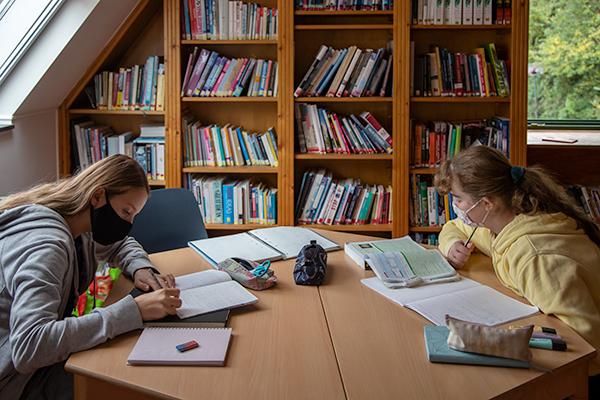
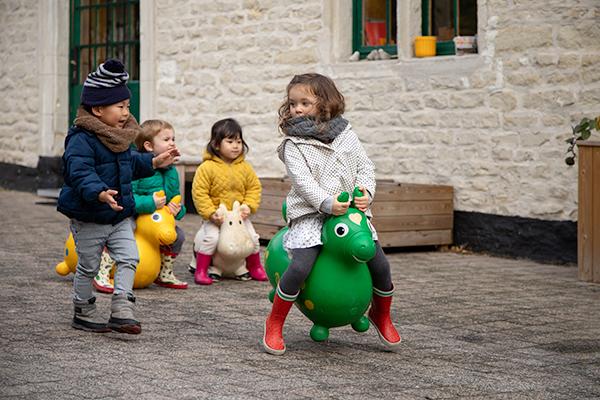
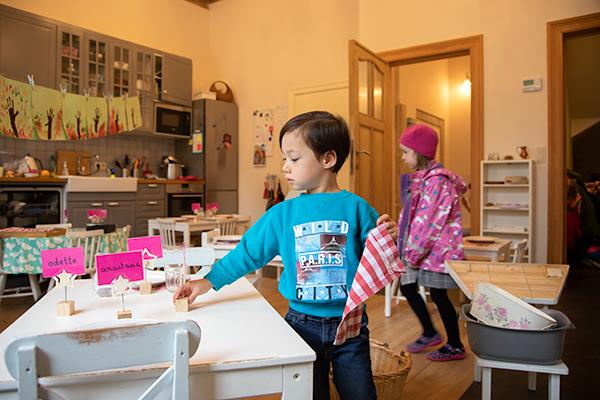


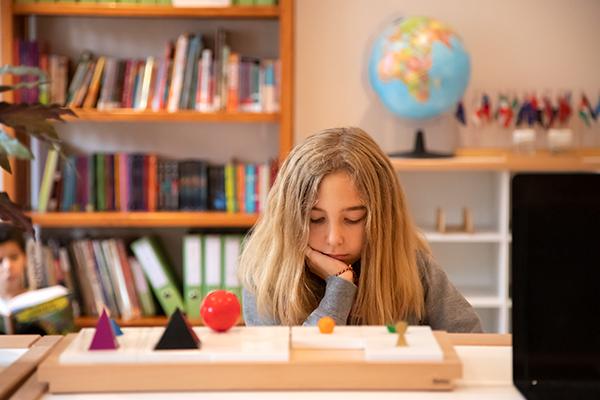
The Montessori Approach
The child-centered Montessori Method was developed by Dr. Maria Montessori in the early 1900s. On this page, you can read about additional educational specialists who have inspired us. Please find more information about the views on individualised education and other unique Montessori insights aiming for intrinsic motivation and a passion for lifelong learning.
Jump directly to:
Educational Specialists:
Contributions to a new form of Education:
- Mihaly Csikszentmihalyi – Flow, Finding Flow, Creativity, Beyond Boredom & Anxiety
- John Dewey – On Education
- Louise J. Kaplan – Oneness and Separateness
- Jim, Charles Fay & Foster Cline - www.loveandlogic.com
- Love and Logic for Early Childhood
- Parenting with Love and Logic
- Parenting Teens with Love and Logic - Paula Polk Lillard – Montessori Today, A Modern Approach, Montessori from the Start, Montessori in the Classroom
- Mark Wahl – Math for Humans
Individualised Education
Nature has things well organised. Every child has an inborn urge of wanting to develop! Maria Montessori defined planes of development covering the first 24 years of self-construction. Special sensitivities are apparent during each plane. Montessori called these the Sensitive Periods. Madeleine Nash, in the article named ‘Fertile Minds’ used the term ‘Windows of Opportunity’; this term is commonly used since. A succession of Windows of Opportunity urges the child in developing particular characteristics and skills. It is the environment that needs to be set up accordingly, and the adults within to be fully conscious of the processes going on. The adults are knowledgeable on what tools to use and how to act, assist and communicate appropriately. Hence the term ‘Individualised education’ – this does not mean that a child works alone, but that the approach of the adult differs per child.
The Montessori classroom offers many opportunities to each child to develop into the person he/she is originally meant to be, and simultaneously work on developing a large set of personal and interpersonal skills. The teachers work ‘in between’ the children, thereby knowing the developmental materials, the current interest of the children, and the curriculum by heart. Simultaneously, they have a deep understanding of the strengths and challenges of every child. Montessori teachers can adapt planning, presentations, ways of working, grouping and lessons to the individual needs of each child at all times. This does not mean ‘giving the child everything he/she wants’, instead, it is offering what the child needs developmentally in such a way that harmonious development takes place.
The interesting side effect is that there is no frontal teaching. Teachers move amongst the students and present different topics at different levels during the day, both to small groups and individually. This means that an array of work is happening at the same time. Children observe well and see what others do and how they go about it. Together with their own work, this sparks the interest and stimulates further and future discovery. This ‘cycle of interest’ keeps going around and around, making a Montessori Classroom a very stimulating environment. Children love to learn and discover!
Individualised education continues in Secondary. Students find themselves in an open plan classroom with students of different ages. They work at their own level across age and subject groups. Children can advance according to their personal development of skills and knowledge. They observe what others are doing, have lots of contact with each other, and can change within group settings as their level and motivation allows. The Secondary Section caters to approximately 70 students. It is small-scale, allowing teachers to know every student well and assist with the academic as well as the social and emotional development.
Multi-Age Grouping
In Montessori schools, children develop within multi-age groups. Due to different levels available and a variety of topics that surface simultaneously, children learn a lot from each other. They listen, observe and participate. Teachers instigate a variety of activities, materials and projects, thus facilitating an array of work happening at the same time. This stimulates children’s interest and motivation enormously as they see what other activities they can do once finished with the original work.
When children are in a multi-age group, they witness that all children are different. They do not compare themselves to others. They know that one day also they will grow into that older student and be able to do what they do now. Older students can help younger students, which brings great opportunities to consolidate their own knowledge. Collaborating with others is a normal state of being, and is stimulated so that there is an improved outcome for all. As children work together, many skills are developed, such as: communication skills, initiative taking, planning, analysing and decision making.
Rethinking education is in line with accepting that every human being is unique, and also in line with the changes in society as we know it today. “One size does not fit all”, nor do we only learn from people who are exactly our age. Grouping per “year” as it happens in general education, is an economic and simplified planning solution. However, it prevents children from learning from each other, as they all learn the same thing and are tested accordingly. This often results in competition and extrinsic motivation is needed to keep the student going.
When working in a multi-age group in a stimulating Montessori classroom that offers an array of activities and processes running parallel to each other, intrinsic motivation is stimulated. The child wants to learn, wants to find out… and is keen on knowing. This state of mind gives energy and enthusiasm. A positive cycle of interest that nourishes itself.
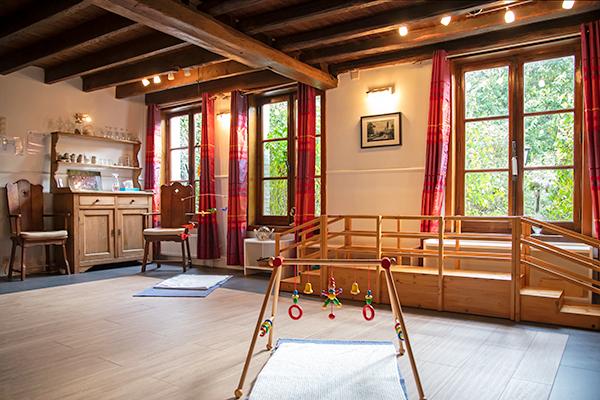

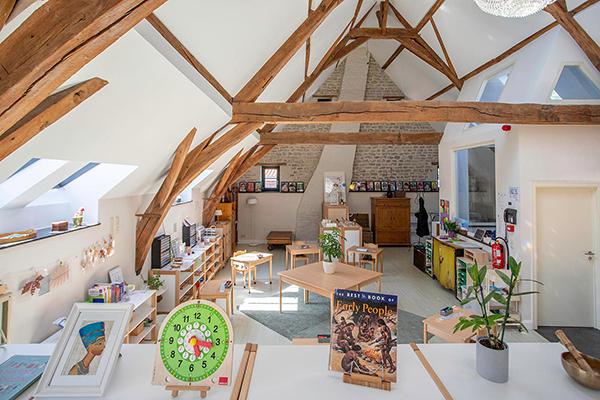
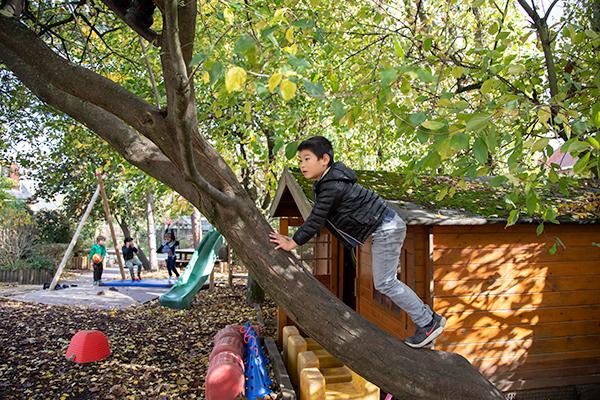
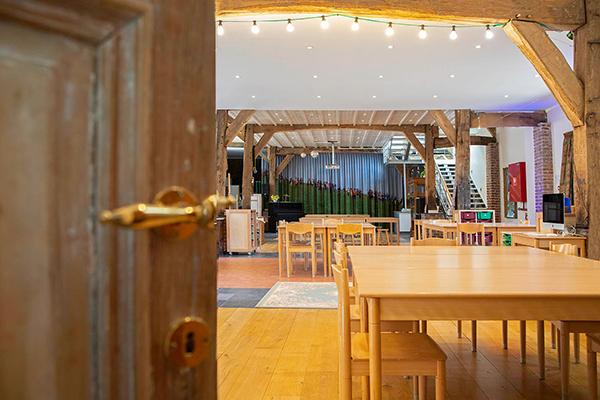
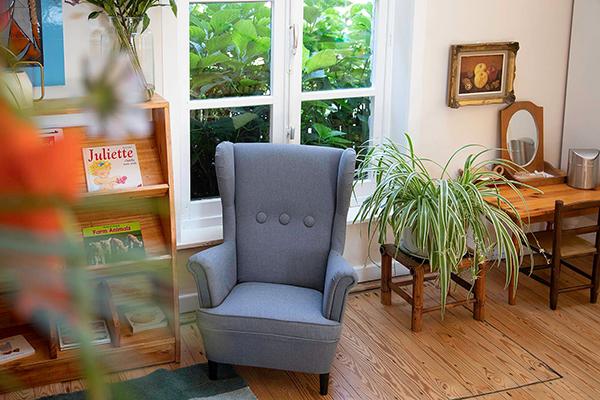
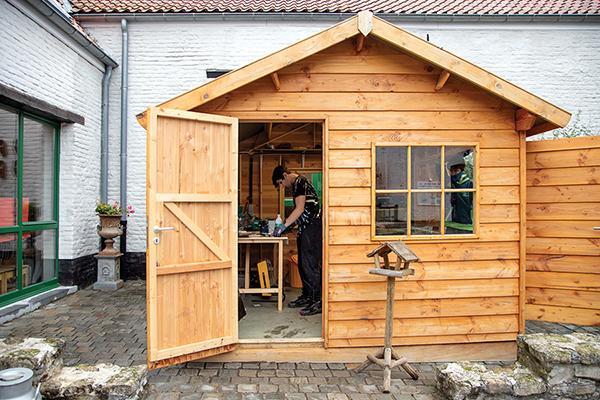

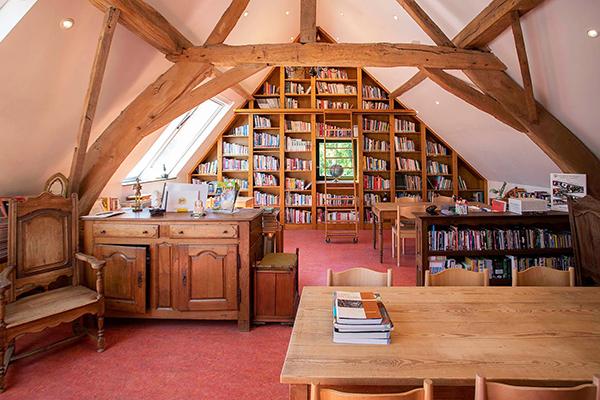
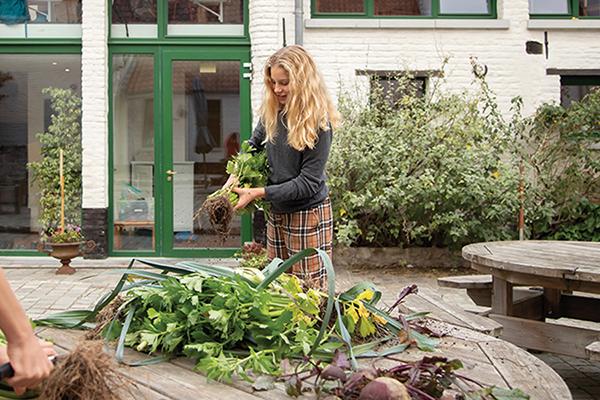

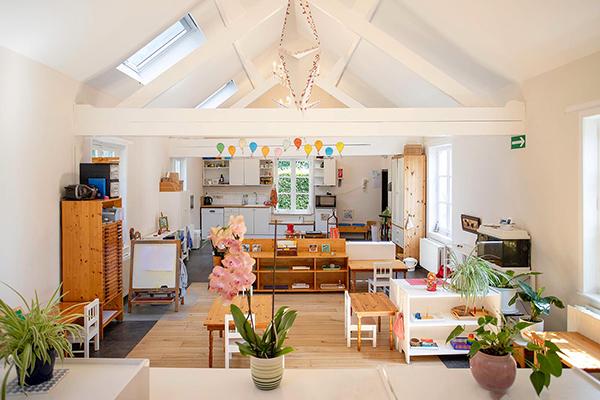
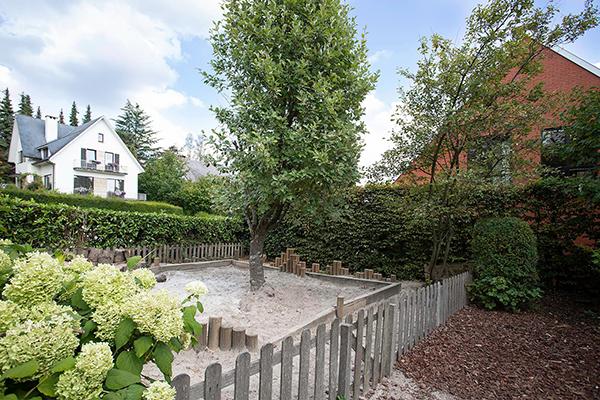

The Prepared Learning Environments
Aesthetically Pleasing
The learning environments provide mental peace for a child to be able to concentrate well and enter a state of flow with the task at hand. Teachers are well prepared and keep their classroom environments beautiful. New parents often walk into the school and comment, “I wish I could go back to school and do it all over again!” The entirety of the tidy shelves with activities, nice seating arrangements, healthy plants, soft mats, organised materials, reading corners and kitchen facilities are inviting and have a “homey” feel to it.Spacious
The classrooms are a minimum of 60m2. Children have abundant space to choose their materials, move around, work on the floor or at a table. They can work at an individual level or in small groups, join whole group music activities, prepare snacks and so on. Older students also have the computers and large screens added to their environments for necessary research and small scale presentations.Ecological and very clean
Renovations and maintenance procedures have resulted in very healthy buildings. Natural building materials and paints are used and the schools are cleaned on a daily basis with ecological cleaning products. To this, we add food of which a minimum of 85% comes from ecological farms.Appropriate to the developmental needs of the child/students
Teachers are trained according to the age ranges they work in. They obtained bachelor, master or PhD degrees and the appropriate Montessori AMI qualifications. The team is extremely knowledgeable and experienced, and are very conscious and sensitive to the needs of the children in their care. In the Montessori classroom, children can be who they are meant to be. Each child has a specific individual learning style. Both teachers and the prepared environment provide varied opportunities to the children so that they can further develop their strengths. Furthermore, the children have the opportunity to become balanced learners in a calm environment that also stimulates skills of other learning styles that are not apparent in the child as yet. This helps the child to feel good about themselves, and to become flexible and adaptable in their approach. These personality traits are essential in functioning well in this fast changing world.
Calm atmosphere
Calmness is created in many ways. Teachers are peaceful, do not raise their voice, and set appropriate and logical limits in a calm manner when necessary. In the environment, one hears constructive work sounds, children collecting items, having a quiet chat, sitting down on the floor or at a table to perform their work and interact when necessary. The appearance of the classroom is calm: no piles of things that need to be blocked out – everything has a place. The classroom has interesting posters at the child’s eye-level, art work and books, but not too overwhelming with ‘window dressings’ that provide distraction. Calmness is also found in the state of mind of the children: they know where to find their work, can do it till it is ready, and are not unnecessarily interrupted. Snack is eaten when hungry, and no school-bell disturbs the atmosphere. Towards the end of the work-cycle, when concentration slowly diminishes, there is a natural break and children sing songs, play music, eat lunch and play outside.Green spaces
The outdoor component is present in every day life. Children play in the sandpits, on the flying fox, the swings and other playground equipment. Additionally, they plant seeds in the greenhouses, work in the vegie gardens, and look after the animals that range from chickens, to cats, to bees, to ponies and Verona the horse. Children love the games that are provided, including circus acts, soccer, basketball and giant chess. Fresh air and space gives one another perspective. Being in the outdoors and enjoying the beautiful gardens feeds the soul and gives energy.A positive world-wide ripple effect
The Montessori concept developed by Dr. Maria Montessori was named after her. However, she pointed clearly at the child. This system of education does not follow a specific person; it follows the true nature of every child. Montessori observed characteristics and developmental tendencies in children that are proven by modern research. Children need to develop a good self-esteem, a healthy imagination, a love for learning, independence, intelligence and decision making powers. By means of having attractive classrooms and teachers who are in tune with each individual child, a Montessori environment provides opportunity for growth in all areas! With this philosophy, one hopes to create a worldwide ripple effect! Individuals with a good self-esteem become happy and balanced members of society. They will be able to look at the past, observe today and make the right decisions for the future!Learning styles
All children are different. Human beings go about things in their individual way and this makes them unique. Therefore the learning styles differ per person as well. The road children take to acquire knowledge is intrinsic to their personality.
Every person has a core, what Montessori called ‘The secret of childhood’. We are who we are. And we also want to stay whom we are. To feel true to our heart, we cannot become different to our origin. To become happy, we need acknowledgement for whom we are. This basic concept translates into predominant characteristics through which we are recognisable by others. It also translates into preferred learning styles.
This is where education comes into the picture. If we all agree that everyone is different, then this needs to be acted upon on a daily level. The traditional segmentation of large groups of children and students by birth date is unnatural. As if they would all be the same when divided by ‘batches’ of the same age. Yet, due to the adults having gone through the same system, and therefore accepting it as ‘normal’ it is still the way that most students are taught. But how can a teacher accommodate the needs of a large group of three year olds? How can a secondary teacher cater for the different learning styles of a class of 25 teenagers? The TED Speaker Series most-watched video clip is by Sir Ken Robinson named ‘Do schools kill creativity?’ He explains the educational paradigm shift that must take place in order for future generations to succeed and grow with our changing times.
You might also like to see the RSA Animate – Changing Education Paradigms.
Borrowing ‘Learning Style’ definitions from the book, ‘Math for Humans’, author Mark Wahl described four distinct temperaments, or ways of taking in and approaching the world. Let’s see if you can recognise your child’s (and your own) learning style with these short introductions:
Beavers
Beavers like routine, logic and consistency. They love to go about their work in a methodical way. They like lists, adhere to the timeframe, do as you ask and feel comfortable within a framework. Within a team they are reliable and solid workers. They are challenged when they are required to come up with innovative ideas, creative concepts and open-ended questions. It annoys them when others frolic around and do not seem to be responsible for a solid outcome.
Dolphins
Dolphins are very much in tune with the emotional life of others, they like to assist, help where they can and often have a very positive influence on a group. Their work is colourful, unique, creative and well cared for. Due to their eye for detail, adhering to a time frame can be a challenge. They love brainteasers but dislike memorisation and tedious study that needs drilling. Those ‘boring questions’ do not deserve their energy.
Owls
Knowledge and reflection! These children are deeply interested in the functioning of the earth, mechanics, and the sciences in general. Knowing why and how phenomena take place absorbs their thinking. A deep, individual concentration assists their hunger for facts. Needing to be a team member or even a leader can be a source of great stress. They like to be left alone and are often not aware of the needs of others. Social interaction seems a ‘waste of time’, keeping him/her away from the more important things in life.
Fox
They are multi-task people, who know what others are going to say. They are keen and witty and understand concepts very fast. Give the fox a problem and solutions are found very fast. A fox never takes the same road to the chicken coop twice! Give the fox a book or series of calculations to work through and you will have a minimal response. They need to be able to wander on new roads, tease their mind and be innovative. Otherwise they will switch off and classify the surrounding as uninteresting.
In the Montessori classroom
In the Montessori classroom we help children grow up harmoniously. What does that mean? The teachers acknowledge the individual learning styles of each child while at the same time helping the child to develop the other sides of their personality. Why would one want to do that?
Self-esteem is boosted when the child feels respect for who they are and how they function. Their success in life is optimised by developing the techniques necessary to be able to work and communicate with those who are different. Being able to adapt to various situations instead of feeling threatened, allows the personality to unfold and function according to their potential!
Mark Wahl’s use of these four animal characteristics were based on the influential findings of Howard Gardner who introduced the idea of multiple intelligences.
For more information please leaf though our special publications on Learning styles. Here you will find the personality traits described per age range as they surface differently as the child grows older. Each document also describes how our school caters for the different learning styles and how we help develop the strengths and the skills of the other personality traits. Ideas for the home environment are included:
Freedom & Limits
Limits are needed to create respect for others
Why such an emphasis on the word limits? Limits are needed for a person not to become limitless. Limits are actually needed for logical thinking to develop. If matters have no reason, why think? Logical thinking starts to develop at a young age. Children need to receive appropriate directives and restrictions since it is necessary to learn to understand that other people have needs to. This is the base of social development. Individuals, who do not respect limits, will never be able to respect others.
By nature children move through three levels of respect.
1
The first level is that a child can only ‘obey’ someone else when it meets the child’s own needs. This is a natural phase that belongs to the first three years of life. It is built in by nature so that the child is not ‘bothered’ yet by too many restrictions and can spend all their energy on self-construction. During this period the infant and toddler slowly realise that they are a separate entity from mum. At birth they become physically separated but it still takes three years for the mind to mature to a separate individual organism.
This oneness and separateness process is beautifully described in the book with the same name written by Dr. Kaplan. As mum is slowly claiming her separateness again during the first three years of the child’s life, the infant receives the message that both people are unique beings with their own likes and dislikes. This is a very necessary process for the child in order to be able to form their own identity. Limit setting is a necessary part of this process; “No, please do not bite mummy”, “I can not pick you up right now, I am carrying the groceries”, “Hold my hand when we cross the street” and other phrases help this process along.
Once this process is ‘completed’ the child actually starts saying “I”. Before that it was the child calling himself by his own name, or saying “me”. So the language indicates a little where the child is in the process.
2
Once the child has integrated the identity, he/she becomes ready to integrate in a group. This brings new experiences since other people will point out their likes and dislikes. This helps the child to move to the second level of respect. Which is being able to do what someone else asks even when it does not meet a personal need. This is a huge step in the social development and the base for successful relationships. By nature, the period of 3 to 6 is set aside for this intense growth in social awareness. In school this is very obvious, since it is the time where children, instead of working parallel to each other as they do in the Toddler Community, start to like to sit together and work in small groups. Therefore some of the materials have now also ‘matured’ from an individual to a groups level. Children practice social rules; they have little conflicts, start to learn problem solving language and techniques and learn to ‘listen’ to others. In groups sessions the teachers introduce ‘Grace and Courtesy’ exercises. They sit in a circle and play a little scene on e.g. how to say “Good morning”, how to say “thank you”, how to say “can I help you?” Due to their conscious mind the children can now experience and learn to think about social interactions and courtesies.
3
Based upon healthy completion of the first two levels of respect, a third level exists in that individuals respect the larger whole. This is due to the fact that they are respected themselves for whom they are. This is where the theory of the learning styles comes in again. When an individual feels respect from parents/teachers/caretakers for whom he really is and can therefore develop to the utmost, simultaneously becoming consciously aware of the challenges, he projects that respect on the surrounding world.
This is the base for respect for other cultures, international mindedness, but also respect for nature, animals and the world at large. Ecology can never just be a subject. Nor does sorting out ones rubbish help a child develop respect for the world at large. Also the quote “Eat, because in Africa there are starving children!” does not have any effect on respect for others. It is a much deeper understanding of child development what is needed here. Respect stems from having been respected oneself for ones true inner life, and simultaneously having been given the limits so that the child did not stick to one learning style but formed an integrated whole with an open mind and a great deal of common sense.
As parents, of course we want our children to become happy. But we must not make the mistake that happiness comes from getting what one wants. When children do not get the age appropriate limits, they get their way instead. A feeling of entitlement develops in the child. “I am entitled to… because Johnny has it!” “I am entitled to a parent who drives me everywhere….”, ” I am entitled to a teacher who is not allowed to make my life difficult”. Jim Fay, part of the ‘Love and Logic’ group has written a very enlightening book on this topic named ‘From Innocence to Entitlement’, a Love and Logic cure for the Tragedy of Entitlement. A tragedy it is, since the original intention was wanting the child to become happy. Happiness comes through achievements. We help children when we ask them to become responsible individuals within the family. They have age appropriate roles to fill which help to create independence so that they can fulfill their roles successfully.
Human beings have the wonderful added bonus to the brain named the Neo Cortex. Because of this layer we can reason, analyse, synthesise, make connections, make choices, solve problems, reflect, become engaged and much more. The Neo Cortex does not develop by itself. It needs the appropriate environment, correct stimulation and lots of situations to practice on.
When children live in an environment with appropriate freedom and logical limits, they receive opportunities to develop. When there is a level of freedom, there will be a level of conflict. And conflicts are opportunities. Often adults try to avoid these. They try to keep life smooth and happy, however, this attitude takes away important learning lessons.
A conflict is a battle of wills. Two or more individuals want something different.
It entails several learning opportunities:
- Learning to make a choice
- Discovering the needs of others
- Communicating with words
- Seeing something from another point of view
All these abilities are Neo Cortex abilities that develop through practice!
The ‘Love and Logic’ organisation gives a lot of concrete information on how to help in the family situation. Love stands for: ‘allowing a child to grow through their mistakes’. And by using Logic, they are allowed to ‘live and learn from the consequences of their choices’. By doing so, it ensures that the consequences of a person’s behaviour are not suffered by someone else and that children develop responsibility of their own actions.
At school, many criteria have been put in place to allow the development of logical thinking related to respect for others. A mix of freedoms and limits offers experiences and opportunities to grow.
1) Multi-age Range
- Older children provide different role models; they have already developed different vocabulary and skills.
- Younger children in the group provide the obvious truth to the older ones that we are all different and equally important. This allows for the development of respect for differences.
- Different ages need different learning lessons. Teachers differentiate their interaction and therefore role model a variety of behaviours.
2) Freedoms
- To choose an activity
- To decide on a research topic
- To go and get what I need to perform my work
- To move
- To talk, discuss with someone else
- To eat when I am hungry
- To go to the bathroom when necessary
3) Related logical limits
- We come to school to ‘work’
- Activities need to be constructive
- Others can not be disturbed
- Ground rule: “My freedom ends, where someone else’s freedom begins”
- I move appropriately
- An object is only used for what it is meant for: e.g. hats for outside / picnic table for working on / broom for sweeping
- I eat at the designated table and clean up after myself
- Toilet area is only for ‘toilet business’
4) Build in Limits in the Equipment
- An object needs to be used for what it is meant for
- In preschool and Primary: One piece of each kind of equipment in the classroom: children learn to become aware of the needs of others, the whereabouts of objects and need to develop communication skills: “Can I help you?”
- Specific and constructive use of equipment
- Child is responsible for the readiness and completeness of the material for the next child.
5) Opportunity to make Decisions
- Practice thinking for oneself: What do I want?
- Learning not to “follow” other children inappropriately
- Practicing making choices (within a range that is acceptable to the others)
- Teacher gives a choice out of two when child has difficulty
- Spontaneous interaction which provides the Practice Ground
- Adults are aware of what is going on and collaborate when necessary.
6) Use of Appropiate Language
- Age appropriate language so that the child listens
- Do not talk too much, so that the child is aware that when the adult speaks it is important to listen
- No blaming, judging, screaming
- Putting the responsibility with the person who caused the problem: How can you solve this?
- Setting limits: As soon as you …… then …….
7) Love and Logic
• Giving children chances to act responsible,
• Showing empathy,
• Let the logical consequences do the teaching,
• Allowing children to live with and learn from the consequences of their choices.
Respect cannot be taught, it needs to be practiced and lived. By providing the practice ground and guide the process of conflict resolution, children become responsible for their own actions and practice respecting others. They use their Neo Cortex and by doing so become logical thinkers who are being prepared for the real world.
Please find out more from books, videos and audiotapes produced by the Love and Logic organisation www.loveandlogic.com.
Skill Based Learning
Montessori education focuses on the development of all intelligences and interweaving between them. The educational setting offers a multitude of learning situations so that children can develop through their strong characteristics and simultaneously develop skills that do not come spontaneously to them.
Communication skills, collaboration, leadership skills, decision making, conflict resolution, research skills with analysing and synthesizing capabilities, presentations skills and more are all present in a days work.
As the person matures within a multi-faceted learning environment, one finds that the different intelligences merge and rarely operate independently. They are used simultaneously and tend to complement each other. Being able to use one’s strong intelligences and develop skills of the other intelligences helps a person to become flexible and adaptable. It stimulates the development of logical and critical thinking and the ability of looking at concepts from several points of view.
Decision Making
The classroom environment offers a level of freedom. This has many purposes. The untrained eye could therefore mistakenly interpret the Montessori method as a “laissez fair” method. However, the freedom offered always has built-in boundaries. It reflects real life, in which we can make our own decisions, as long as it does not put others at a disadvantage.
In the Montessori school, the educational environment simulates real life. We are preparing children for the world, and there is not always someone who tells you what to do, how to do it, when to do it and with whom! So let’s practice in a safe environment!
The classroom offers materials, activities and lessons related to the development of all characteristics of that age range. It is what we call a prepared, well thought-through environment for a specific level of development. Within this, children have a certain freedom to choose what they do, with whom, and for how long they do it. At the same time, boundaries are set in terms of the variety of work and that the work is done in a productive manner which is not disruptive to other’s work. As they go along during the day several decisions and choices need to be made.
Problem solving and decision-making processes are made in the neo cortex part of the brain. This is the area where logical thinking evolves. It involves both the left and right side of the brain. The left side is responsible for analysis and synthesis and the right side housing the creative processes. Allowing stimulation to both sides of the brain from an early age, stimulates higher brain functioning and integration of the two sides.
The development of logical thinking requires a lot of experiences and practice. Together with the emotional awareness of having a level of control in one’s own life gives the development a great boost!
Motivation
Motivation as a general term can be extrinsic or intrinsic. Extrinsic is when children work due to pressure and/or rewards. They work because they have to or because there is an external motivation. The opposite, being intrinsic motivation is an internal, long lasting phenomena. A person is intrinsically motivated when he/she wants to do something. When there is an inner urge to do something, without promised rewards. An intrinsically motivated student likes to work at school, contribute to lessons and discussions and collaborates with others. At the Montessori school and in the IB sections, we work on the development of intrinsic motivation. This reaches much further than extrinsic motivation, since the latter is very short lived and the child does not feel responsible for the outcome. Intrinsic motivation goes hand in hand with responsibility for self and others. It leads to life long learning and success in one’s career.
Due to the educational approach, Montessori graduates are much more likely to show high levels of intrinsic motivation.
How does this come about?
- Cycles of uninterrupted concentration
- Opportunities given to preferred learning styles
- Choice, therefore the work is theirs
- Opportunities to expand on their knowledge
- Decision making opportunities
- Logical limits that enhance the development of responsibility
- Empowerment which is followed by pleasure in what they do
Intrinsic motivation builds the personality. It is a “characteristic” for life.
An intrinsically motivated person will do well in anything they set their mind too.


